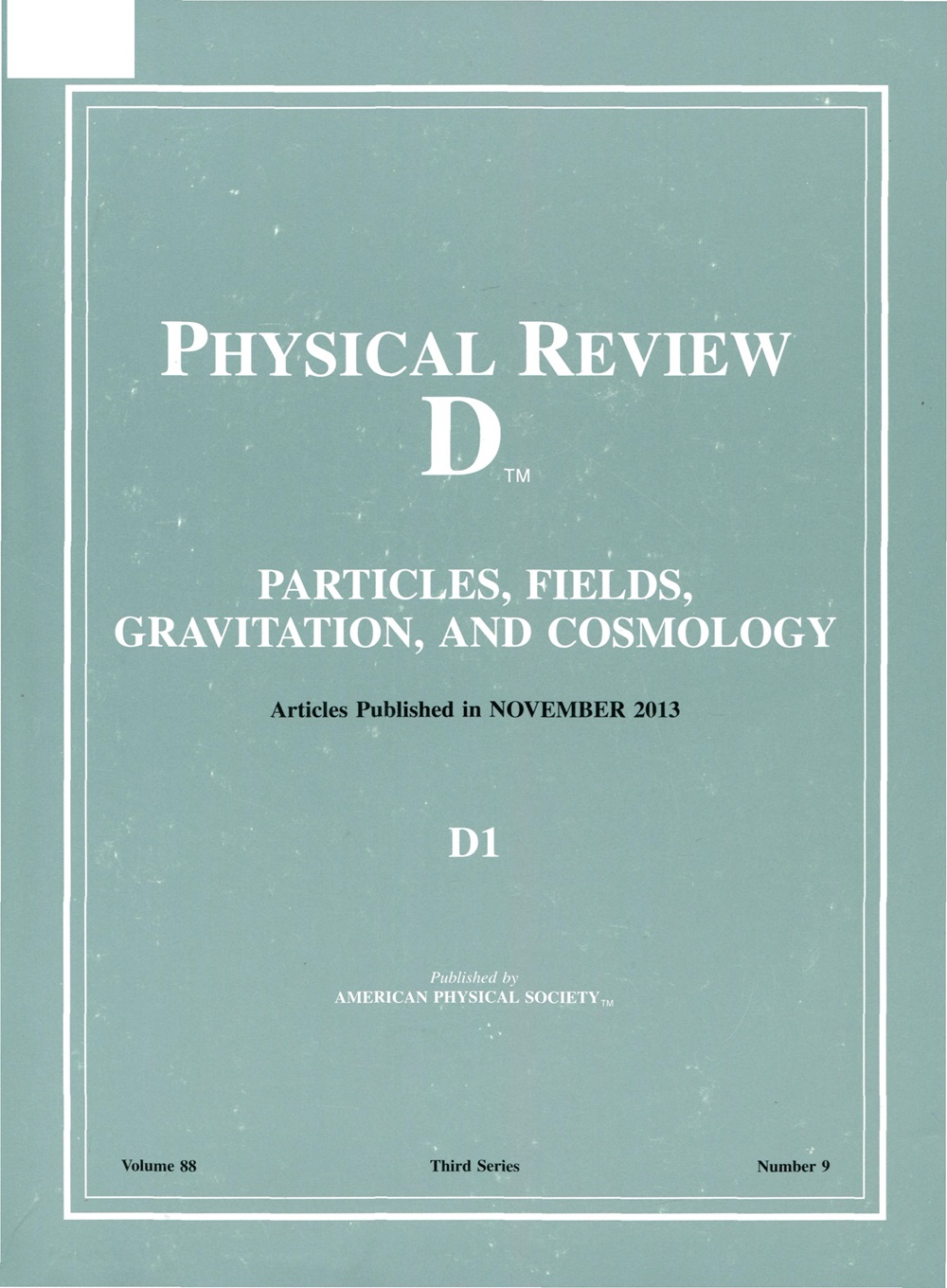Shedding light on the intrinsic transversal momentum distributions of pions and kaons
IF 5
2区 物理与天体物理
Q1 Physics and Astronomy
引用次数: 0
Abstract
We propose to introduce the intrinsic transversal momentum distribution functions (iTMDs), in conjunction with the light-cone distribution amplitudes, to elucidate the probability amplitude of encountering a meson state wherein the partons swiftly traverse along the longitudinal axis while gently oscillating in the transversal plane. The primary motivation stems from the oversight of soft transverse dynamics within the kT factorization formalism of an exclusive QCD process, which confines perturbative QCD (pQCD) predictions to scenarios involving large-momentum transfers. We meticulously investigate the求助全文
约1分钟内获得全文
求助全文
来源期刊

Physical Review D
物理-天文与天体物理
CiteScore
9.20
自引率
36.00%
发文量
0
审稿时长
2 months
期刊介绍:
Physical Review D (PRD) is a leading journal in elementary particle physics, field theory, gravitation, and cosmology and is one of the top-cited journals in high-energy physics.
PRD covers experimental and theoretical results in all aspects of particle physics, field theory, gravitation and cosmology, including:
Particle physics experiments,
Electroweak interactions,
Strong interactions,
Lattice field theories, lattice QCD,
Beyond the standard model physics,
Phenomenological aspects of field theory, general methods,
Gravity, cosmology, cosmic rays,
Astrophysics and astroparticle physics,
General relativity,
Formal aspects of field theory, field theory in curved space,
String theory, quantum gravity, gauge/gravity duality.
 求助内容:
求助内容: 应助结果提醒方式:
应助结果提醒方式:


